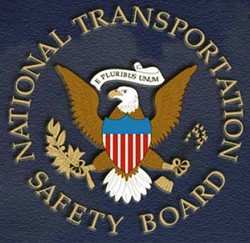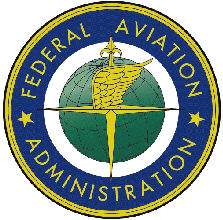Thu, Jun 16, 2005
Says Current Methods Of Collecting And Reporting On GA Safety
Issues Aren't Enough
 The National Transportation Safety
Board Wednesday released a safety report recommending that new
methods be developed for collecting and reporting flight activity
data for smaller, noncommercial (general aviation) airplanes.
The National Transportation Safety
Board Wednesday released a safety report recommending that new
methods be developed for collecting and reporting flight activity
data for smaller, noncommercial (general aviation) airplanes.
The report was prompted by NTSB concerns about the accuracy and
consistency of the procedures currently used by the Federal
Aviation Administration in calculating how much and for what
purpose people fly.
Unlike scheduled, commercial air carriers, general aviation
operators are not required to report actual flight activity
data. Instead, the FAA uses its annual General Aviation and
Air Taxi Activity (GAATA) Survey to query a sample of registered
aircraft owners, either through the Internet or by mail.
Responses from the sampling are then extrapolated to the entire
aircraft registry to obtain estimates of total activity.
The NTSB and others rely on this data to calculate accident
rates and statistics that form the basis for assessing general
aviation safety in the US. Valid activity data are necessary
to compare the accident rates for different aircraft types and
types of operations, to establish baseline measures that can be
used to identify and track accident trends, and to assess the
effectiveness of safety improvement efforts.
 However, the NTSB is concerned that
the survey is based on a relatively small sample of diverse
aircraft operations and that the aircraft registry may contain many
outdated and inaccurate records.
However, the NTSB is concerned that
the survey is based on a relatively small sample of diverse
aircraft operations and that the aircraft registry may contain many
outdated and inaccurate records.
The NTSB report discusses staff attempts to independently verify
the accuracy of general aviation activity estimates by comparing
FAA aircraft registry records and annual flight-hour estimates with
other indicators of flight activity for the years 1985-2002,
including the size of the active pilot population and annual
aviation fuel consumption. While the staff found strong
statistical relationships among these various indicators, and with
annual accident totals, they did not observe any significant
correlations between the annual general aviation flight-hour
estimates reported in the GAATA survey and the other activity
indicators.
More News
He Attempted To Restart The Engine Three Times. On The Third Restart Attempt, He Noticed That Flames Were Coming Out From The Right Wing Near The Fuel Cap Analysis: The pilot repor>[...]
Make Sure You NEVER Miss A New Story From Aero-News Network Do you ever feel like you never see posts from a certain person or page on Facebook or Instagram? Here’s how you c>[...]
From 2009 (YouTube Edition): Leading Air Show Performers Give Their Best Advice for Newcomers On December 6th through December 9th, the Paris Las Vegas Hotel hosted over 1,500 air >[...]
Aero Linx: NASA ASRS ASRS captures confidential reports, analyzes the resulting aviation safety data, and disseminates vital information to the aviation community. The ASRS is an i>[...]
“For our inaugural Pylon Racing Seminar in Roswell, we were thrilled to certify 60 pilots across our six closed-course pylon race classes. Not only did this year’s PRS >[...]
 NTSB Final Report: Rutan Long-EZ
NTSB Final Report: Rutan Long-EZ ANN FAQ: Turn On Post Notifications
ANN FAQ: Turn On Post Notifications Classic Aero-TV: ICAS Perspectives - Advice for New Air Show Performers
Classic Aero-TV: ICAS Perspectives - Advice for New Air Show Performers ANN's Daily Aero-Linx (06.28.25)
ANN's Daily Aero-Linx (06.28.25) Aero-News: Quote of the Day (06.28.25)
Aero-News: Quote of the Day (06.28.25)




